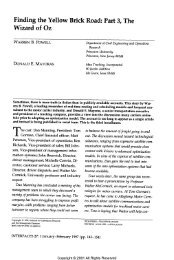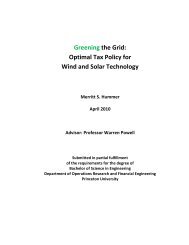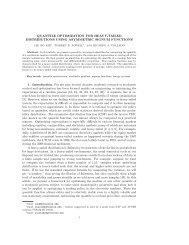lecture. - CASTLE Lab - Princeton University
lecture. - CASTLE Lab - Princeton University
lecture. - CASTLE Lab - Princeton University
You also want an ePaper? Increase the reach of your titles
YUMPU automatically turns print PDFs into web optimized ePapers that Google loves.
Growth Conditions<br />
Example(strongly convex function)<br />
Let f(x) be a twice differentiable, strongly convex function over a convex set C<br />
comprising its minimum: there exists a constant m > 0 such that ∇ 2 f(x) mI<br />
for all x ∈ C. Since for any x,y ∈ C, there exists a point z = tx +(1−t)y with<br />
t ∈ [0,1] such that<br />
f(y)−f(x) = ∇f(x) ⊤ (y −x)+ 1<br />
2 (y −x)⊤ ∇ 2 f(z)(y −x) ,<br />
we have, by the strong convexity assumption,<br />
f(y)−f(x) ≥ ∇f(x) ⊤ (y −x)+ m<br />
2 ||y −x||2 .<br />
Consider S = argmin Cf, s ∈ S, and write fS = minC f. We have<br />
f(y)−fS ≥ ∇f(s) ⊤ (y −s)+ m<br />
2 ||y −s||2 ≥ m<br />
2 ||y −s||2 ,<br />
using the fact that ∇f(s) ⊤ (y −s) ≥ 0 for all y ∈ C and s ∈ S, by optimality of<br />
S. This proves that S is in fact reduced to {s}, and that the second-order<br />
growth condition holds with modulus c = m/2:<br />
f(x)−fS ≥ c[x −dist(x,S)] 2<br />
for all x ∈ C.<br />
Boris Defourny (ORFE) Lecture 6: Perturbation Analysis in Optimization March 15,2012 15 / 26








